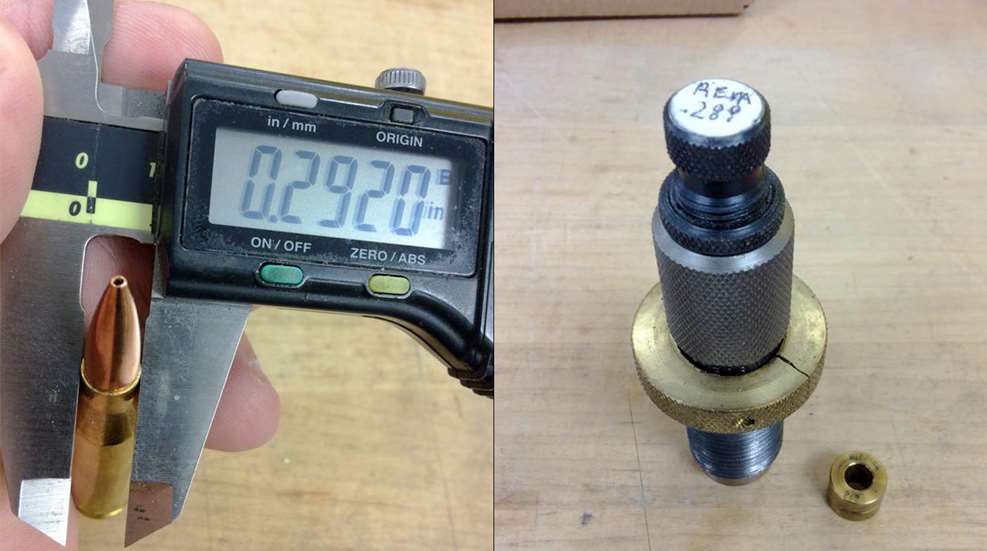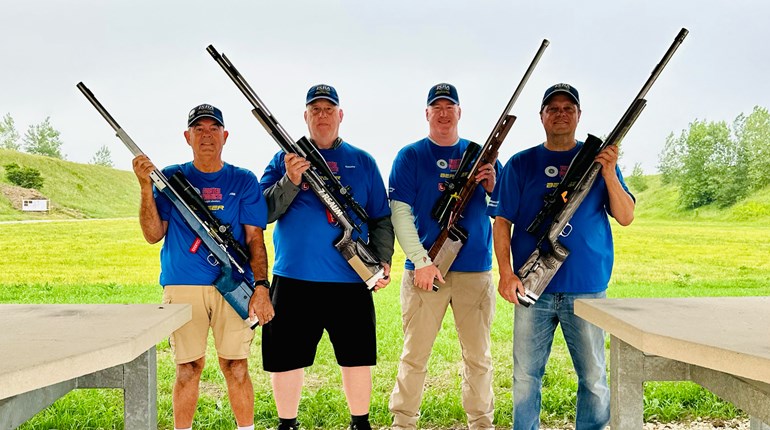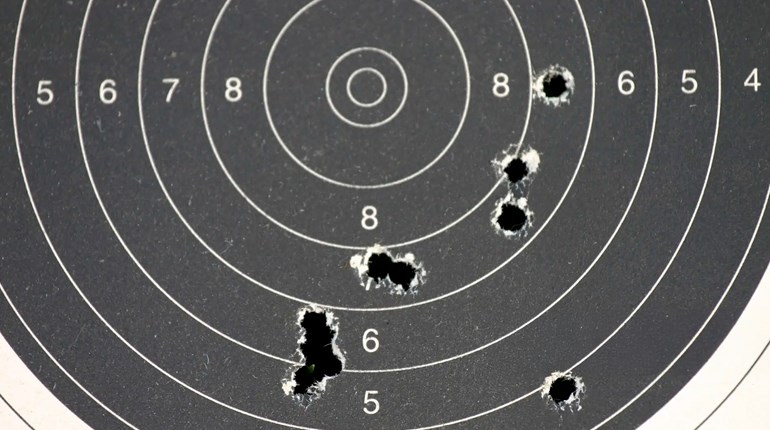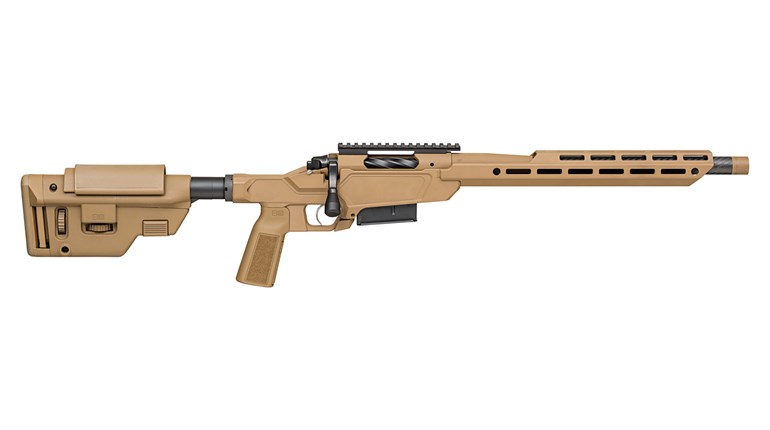
WARNING: All technical data in this publication, especially for handloading, reflect the limited experience of individuals using specific tools, products, equipment and components under specific conditions and circumstances not necessarily reported in the article and over which the National Rifle Association (NRA) has no control. The data has not otherwise been tested or verified by the NRA. The NRA, its agents, officers and employees accept no responsibility for the results obtained by persons using such data and disclaim all liability for any consequential injuries or damages.
In this article, we present a method of easily increasing neck tension for rapid fire or magazine use, without significantly altering our brass preparation regimen. Here at the U.S. Army Marksmanship Unit (AMU), we use high-quality, progressive presses with case feeders and carefully-set dies for preparation of large lots of brass—but not fully progressive loading of ammunition, as all charges are hand-weighed for extreme accuracy and reliability.
In Station 1 of our progressive press, we install the normal FL die which sets case neck tension to our selected 0.003-0.004 inch range. This die includes an expander ball which has been tapered and honed to just barely touch the case necks as the case exits the die. It is not so much for expanding necks, as it is for eliminating any out-of-round condition (i.e., mouth dents) that exists before the case is sized.
This is not so much for expanding necks, as it is for eliminating any out-of-round condition (i.e., minor mouth dents) that might exist before the case is sized. This helps prevent case mouth irregularities, rare though they might be when using top-quality brass. [Significant dents are rounded out by hand during pre-loading inspection.]
The expander ball limits the amount of neck tension that can be applied using that die. Using the .260 Remington as an example, when set up for long-range, our die bushing sizes the neck to 0.289 inch. Merely swapping a 0.286 inch bushing into that die won’t result in increased neck tension, however, as the expander ball will return the neck to 0.289 inch as the case exits the die.
We could remove the expander ball in concert with installing the 0.286 inch bushing. However, we’ve already carefully ensured the concentricity of our decapping stem/expander ball assembly. So instead, we add another die with a 0.286 inch bushing and no expander ball to Station 2. This sizes our necks further, from 0.289 to 0.286 inch when more tension is desired. This approach is efficient, and in a shop that employs more than one handloader, a quick look instantly confirms the current press configuration.
This approach is efficient, and in a shop that employs more than one handloader, a quick look instantly confirms the current press configuration. Those who opt to try the two-size-die method may find a little extra lube on the case necks to be helpful. And now, we will reiterate our position on crimping: The AMU does not crimp rifle cartridges, and advise against it for accuracy handloads.
The AMU Answers Your Questions
Recently, a reader asked if we have found significant variation in neck tension among cases of specific types. While we use a lot of LC virgin, primed brass, we also use many other brands, including some high-end imports, domestic brands, etc., depending on the caliber.
Overall, we don’t experience much variation in case neck tension between individual cases within a brand or lot of cases. One factor that *can* cause apparent differences in neck tension (resistance felt when seating bullets) is differences in case lube in the necks. For this reason, we are careful to keep this uniform when spray-lubing our cases before sizing—as described in an earlier article showing the angle and directions used when spray-lubing cases.
Another reader asked if we have experimented with case neck lube solutions, such as graphite/alcohol. Many years ago, we experimented with dry moly powder kits as a way to lube case necks inside/out, but our methods have evolved tremendously since then. This writer is not aware of any such experiments in recent years, and our current method is working extremely well.
SSUSA thanks the U.S. Army Marksmanship Unit for allowing the reprint of this article.


































